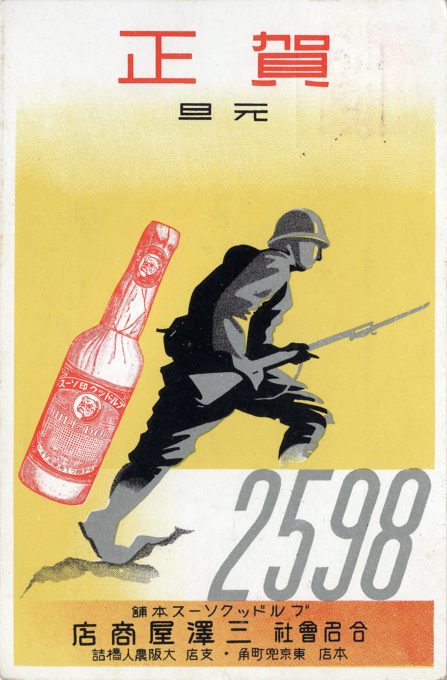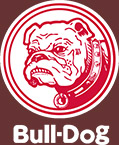
“Bull-Dog Sauce” New Year’s advertising & propaganda postcard, 1938. The “2598” refers to the year since the ascension of the first emperor, Jimmu. In 1940, Japan would celebrate 2,600 years of existence.
See also:
2600th Anniversary of the Founding of Japan, 1940.
Kikkoman brand Soy Sauce (history), c. 1930.
“‘Bull-Dog’-brand sauce has a history spanning over 100 years and is considered one of Japan’s representative condiments.
“At the beginning of the twentieth century, when western food was starting to spread in Japanese homes, a shop called Misawaya (now ‘Bull-Dog Sauce’, established in 1902) developed a sauce that would suit Japanese tastes based on Worcestershire sauce. It succeeded not as a cooking ingredient or secret ingredient, but as condiment used as is on western foods like cutlets and fried foods.
“The bulldog is a symbolic and beloved dog in England, where Worcestershire sauce originated. Also, at around the same time as the sauce became familiar in Japanese homes in the late 1920’s, bulldogs started to become popular pets. Therefore, so as to be loved by many people in the same way the sauce and the pet dogs are, the name ‘Bull-Dog’ was adopted and became the new mark of the brand.
“In 1905 Bull-Dog Sauce opened a small scale factory in Hatchobori, Tokyo to provide supplies for making Worcestershire sauce. When it was first established, bottles and earthen jars were used, and it was sold by measure.
“Today, shipments go out all over Japan every single day from the Hatogaya factory in Saitama Prefecture and the Tatebayashi factory in Gunma Prefecture. About 120,000 liters of sauce are made at the Tatebayashi factory in Gunma in a single day.”



Pingback: “Japan Post” New Year’s promotional postcard (“Nengajou”), c. 1930. | Old TokyoOld Tokyo